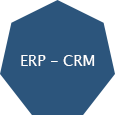Notice: Undefined variable: diag_inno in /home/mpiica/public_html/includes/module-access-check.php on line 16
Why make a self-assessment?
- Because it provides a selfportrait of the current state;
- Because it helps identify areas of your business you wish to improve and develop untapped potential;
- Because it gives you a reference dashboard that allows you to prioritize your future actions;
- Because it allows you to establish your action plan, which will help your company achieve its goals.
Instructions:
- Fill each section at your pace, you can return to the self-assessment whenever you want with your login and password
- Give yourself an incremental amount of points between 0 and 10 for each statement
- The “Help” links in the statements provide reference points to guide thinking and assist the participant to identify the clues from the text.
- With each fully completed section, a link “Check your results” allows you to graphically view your level for each section filled
- If a question seems ambiguous, answer to the best of your knowledge
- Need help? contact us: question@mpii.ca
When you make the auto-evaluation and choose between 0 and 10, in that moment you note what has already been achieved en route towards the untapped potential of your business. It is from these assets that you will be able to anticipate the future, target your growth objectives and define in which axis of innovation you want to become better!
Your Self-Assessment*







